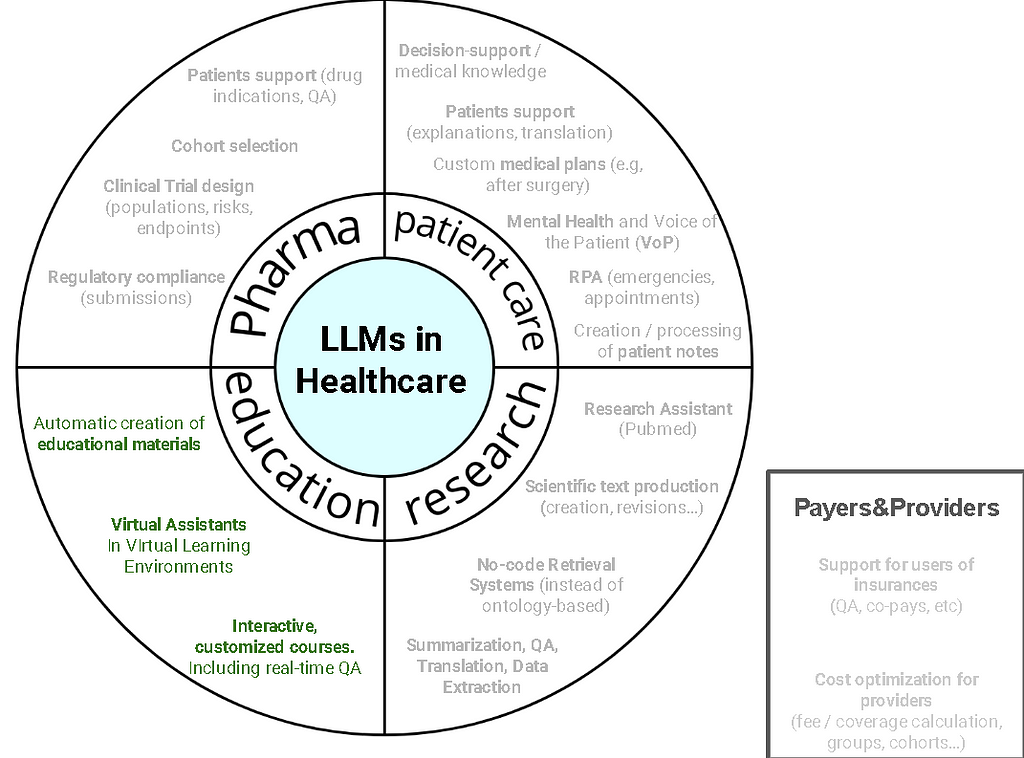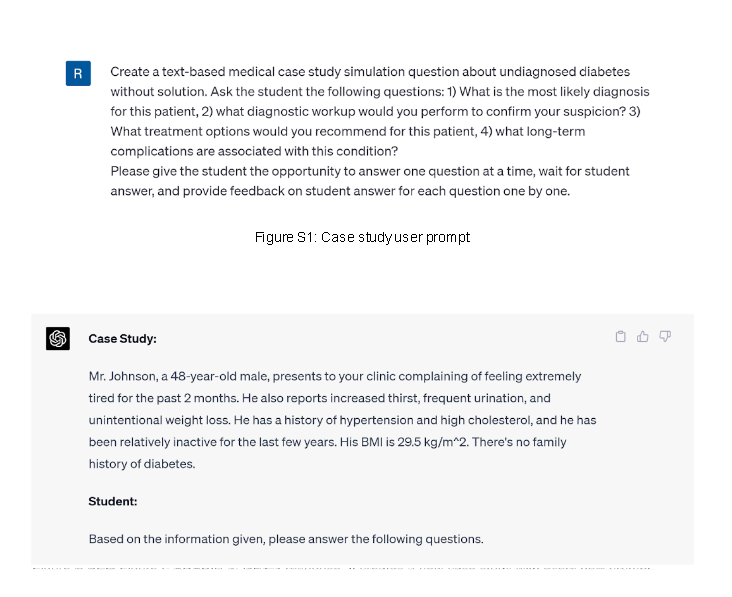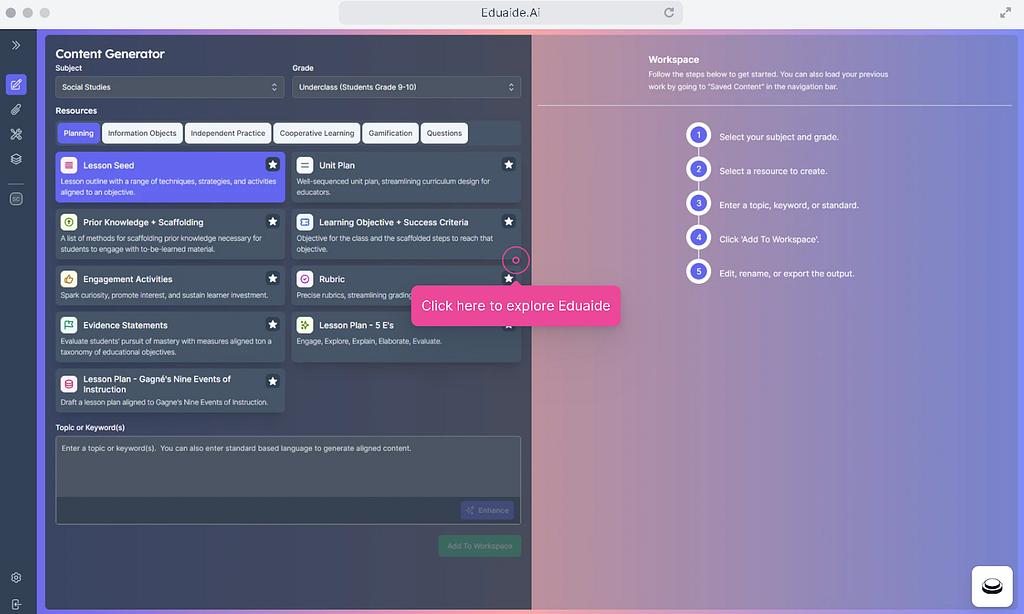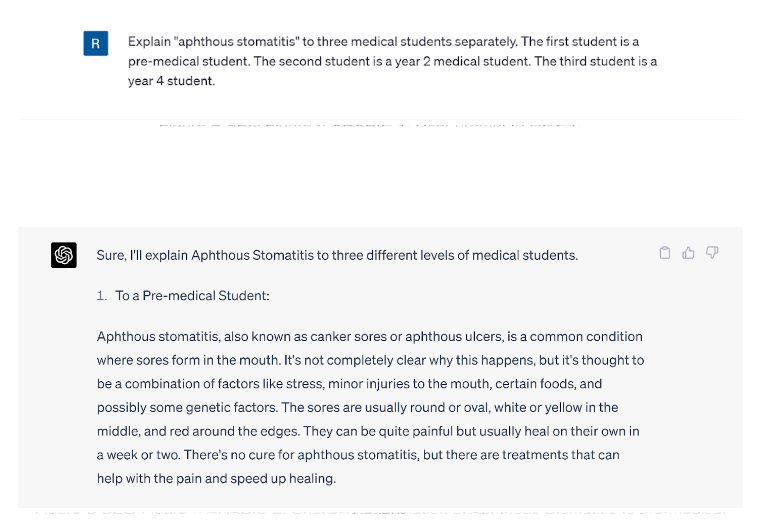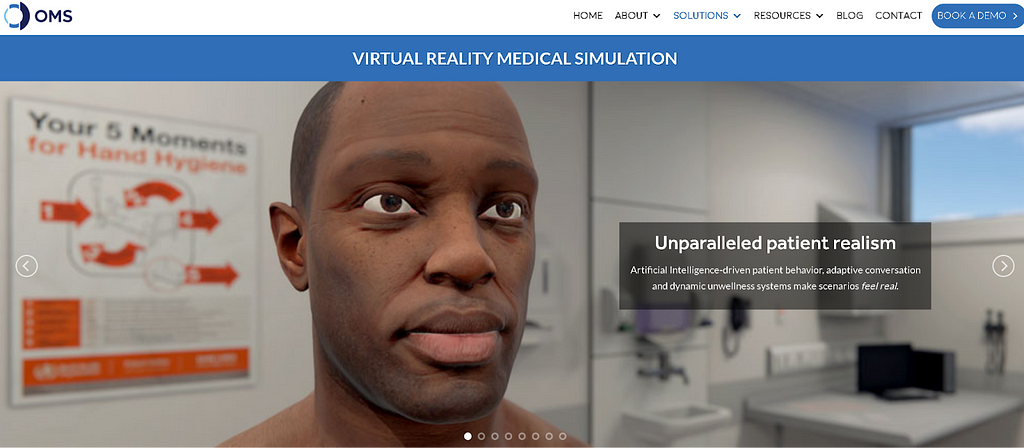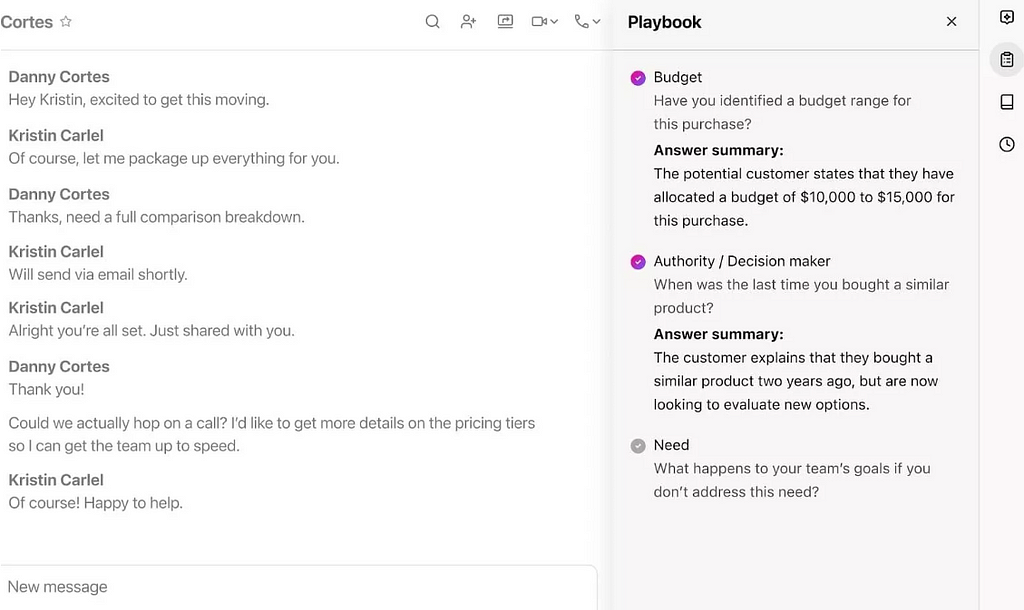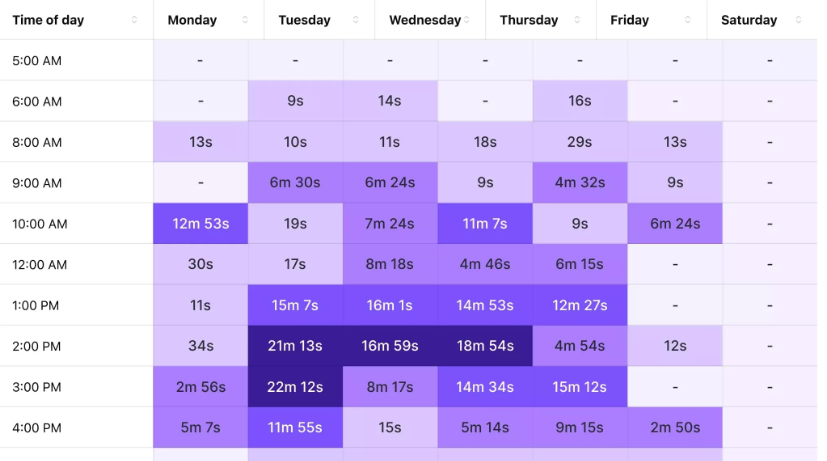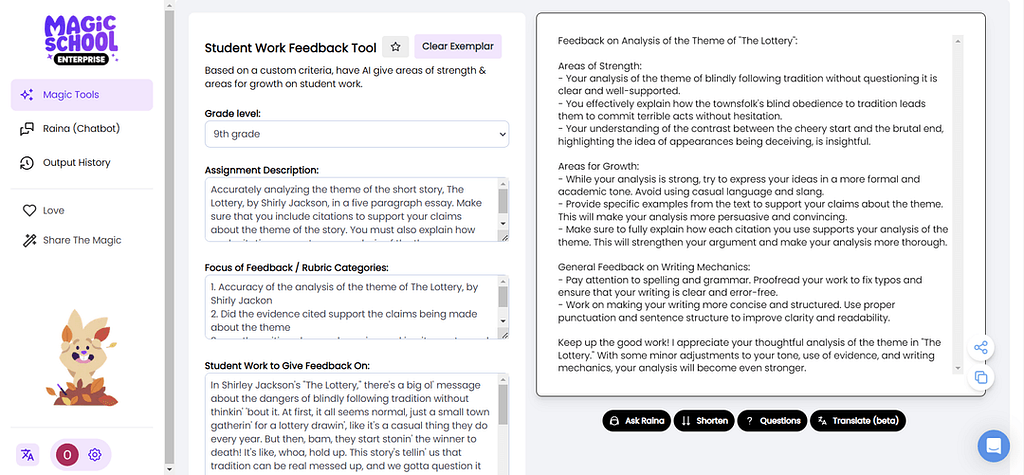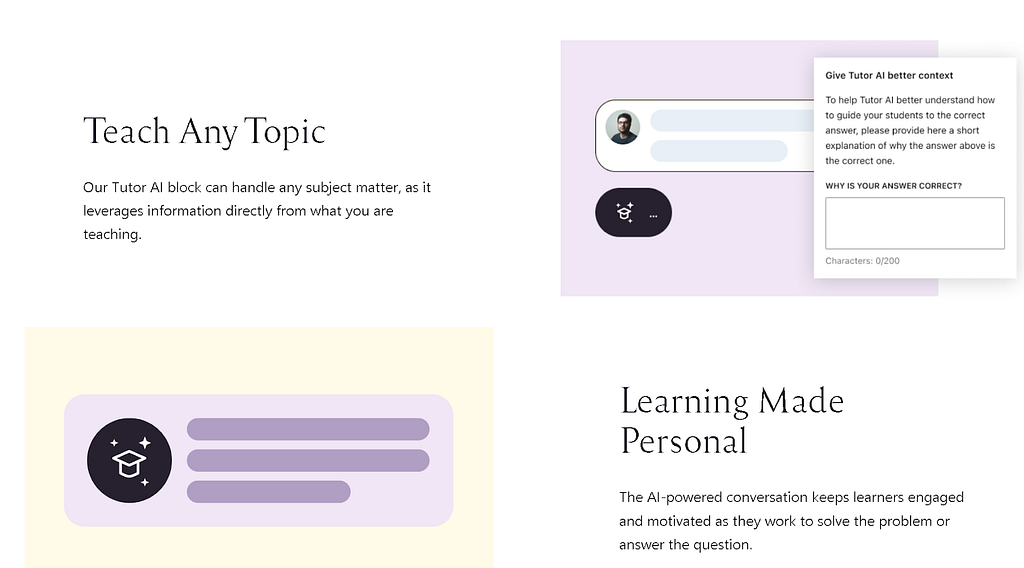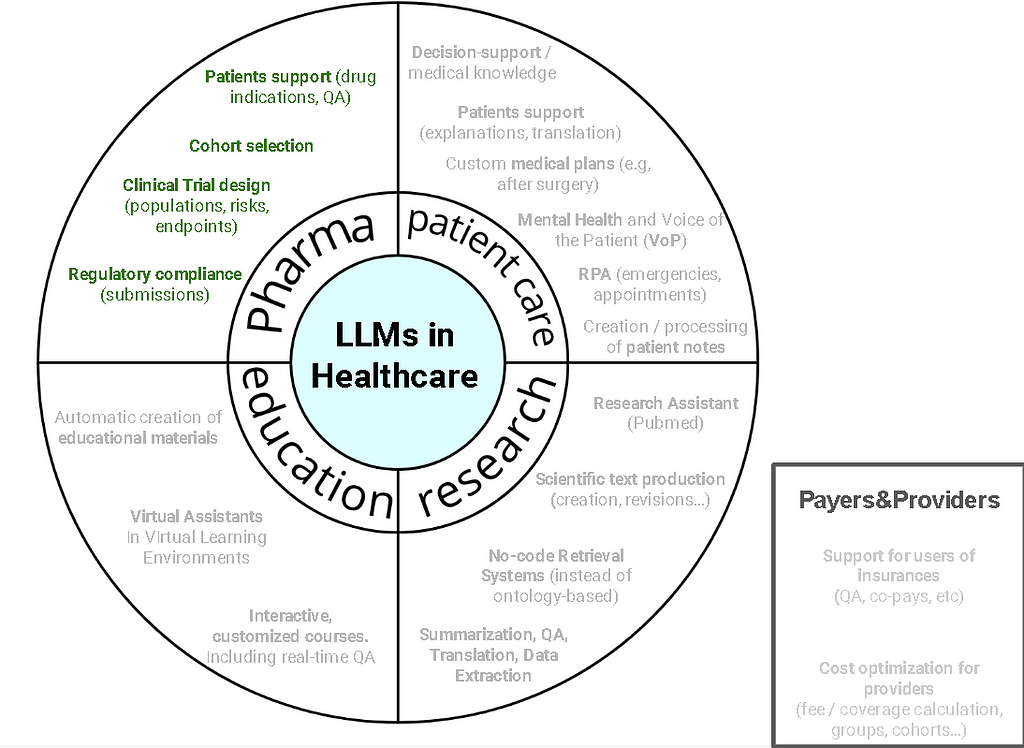Applications of LLMs in Educational Healthcare
Categories:
Introduction
In the dynamic landscape of healthcare, the integration of cutting-edge technologies is revolutionizing every facet of the industry. One such groundbreaking innovation is the application of Large Language Models (LLMs), which harness the power of natural language processing to reshape healthcare, medical and patient care, pharmaceutical practices, healthcare education, research endeavors, and the intricate relationships between payers and providers.
This article delves into the myriad ways LLMs are making waves in the Educational Healthcare sector, offering new ways to train future professionals (clinicians, nurses, or other healthcare-relationed professionals) with brand new approaches empowered by technology, as Automatic Creation of Educational Materials, Virtual Assistants, Simulations, Customized Courses, Score Ranking and much more. Join us on a journey through the multifaceted applications of LLMs in shaping the future of healthcare!
Enhancing Education in Healthcare through Large Language Models
The integration of the Large Language Model has emerged as a transformative force in the education of clinicians and healthcare professionals. From automatic content creation to the development of virtual assistants and immersive virtual reality experiences, LLMs are reshaping the way we approach medical education. Here’s a closer look at how LLMs are revolutionizing clinician training.
Automatic Content Creation and Recommendation
LLMs serve as versatile tools for educators by generating compelling summaries, presentations, translations, and contextualized explanations across a spectrum of medical topics. Their ability to produce content with customizable depth, tone, and style empowers educators to tailor learning materials to the specific needs and preferences of individual learners. This facilitates the creation of engaging revision aids, test examples, and comprehensive study materials.
Figure 1: Creating a Case Study Simulation for Educational Purposes using ChatGPT, from the Large Language Models in Medical Education: Opportunities, Challenges, and Future Directions
We got the inspiration from this article from the Large Language Models in Medical Education: Opportunities, Challenges, and Future Directions paper, where they offer a list of prompt examples in their appendixes (see Figure 1).
Some examples of tools already leveraging LLM for Automatic Content Creation are Education Copilot , Magic School and eduaide.ai, which offer, among others, automatic creation of Unit Plans Plans with their Success Criteria, Objectives, Engagement Activities, Tables and Tables Analysis, Reading — Writing — Quiz Activities, etc.
Also, AI algorithms can provide students with relevant learning materials, courses, and resources. By considering their interests, skill gaps, and learning history, AI ensures learners receive tailored recommendations, increasing the chance that they will engage with the material.
Figure 2: Creating automatic contents with eduaide.ai
Personal AI Tutor and custom student journeys
With the ability to process vast amounts of information swiftly, LLMs facilitate real-time question-and-answer sessions during educational modules. Clinicians and healthcare professionals can pose queries and receive instant, well-informed responses, enhancing the efficiency of learning sessions. This dynamic interaction not only accelerates the learning process but also fosters a collaborative and responsive learning environment.
Short-term: A Tutor to explain and summarize concepts for you
In the paper Large Language Models in Medical Education: Opportunities, Challenges, and Future Directions, the authors share their experience with Petal AI (a “chat over documents” tool) to act a a Personal AI Tutor, more specifically to explain, and summarize texts for educational purposes.
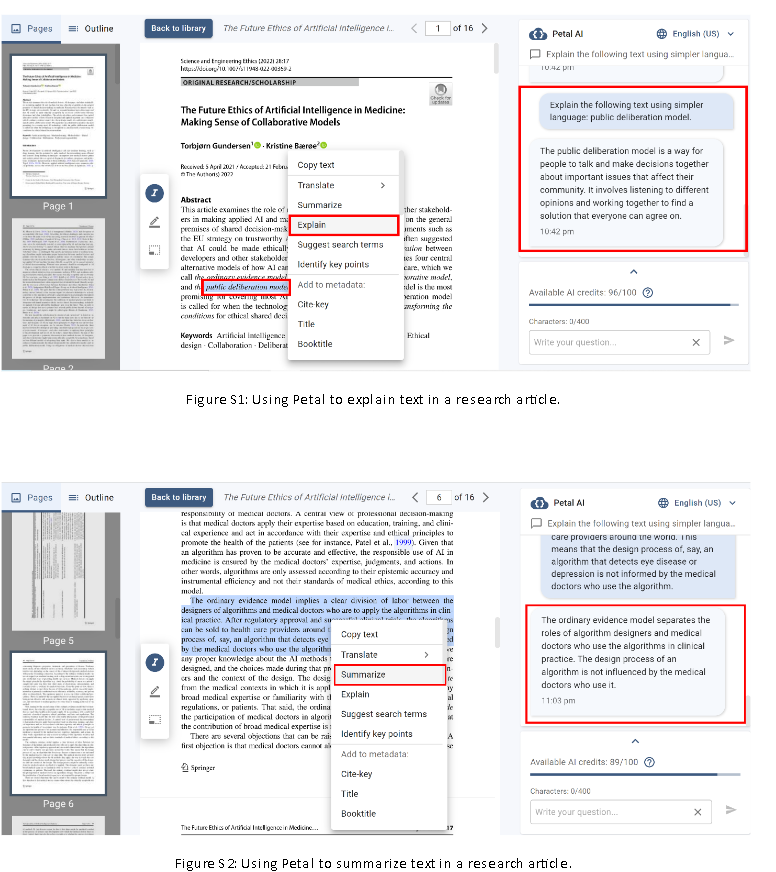
Figure 3: “Explain” and “Summarize” functions for using Petal AI, mentioned in the Large Language Models in Medical Education: Opportunities, Challenges, and Future Directions
But when talking about student journeys, we go beyond the short term of understanding individual documents — what we really need is a mid/long-term AI-driven Learning Management System (LMS) to assist in the whole journey.
Long-term: Learning Management Systems
Currently there are not many LMS claiming the usage of LLMs to generate educational content, even more tailoring the responses of it with your own content and style.
The first we found was sanalabs.com AI learning platform. They claim they offer an AI-driven experience which can provide immediate chat responses, delivering valuable hints and feedback to guide your students toward the correct answer, using your own materials.
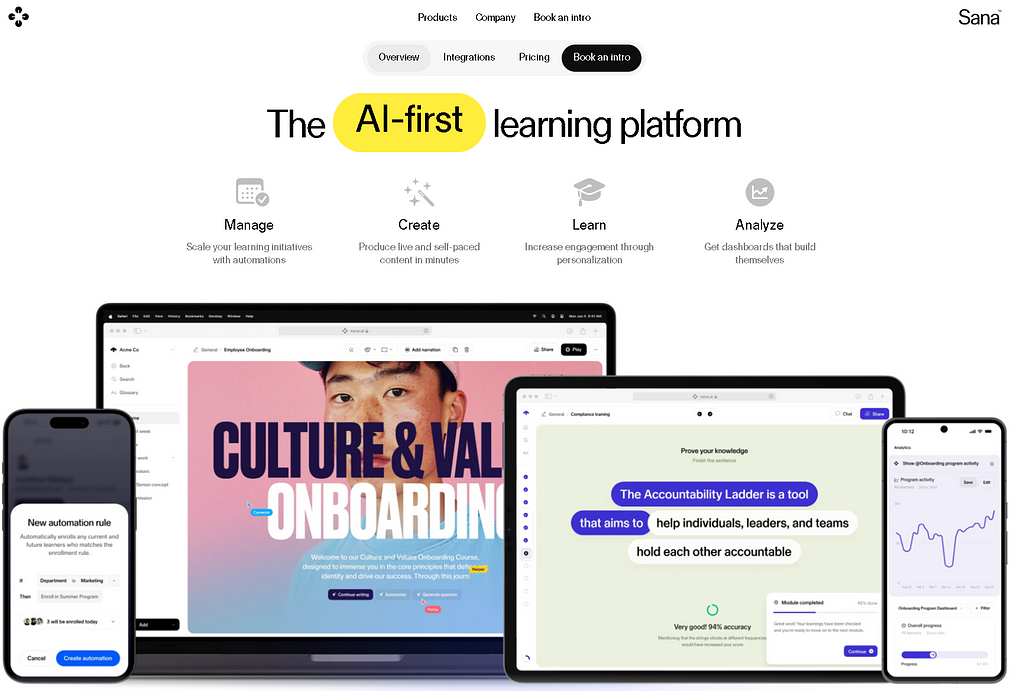
Figure 4: Sanalabs AI Learning Platform
Indeed, personalization can increase engagement and ensure that learners are given material most relevant and beneficial to their educational journey. LLMs excel in adapting to the unique learning styles and preferences of each individual. Educators can harness this capability to tailor educational content, pacing, and assessments to the specific needs of learners: language, level of knowledge (including the course of the student), pace, specific abilities or disabilities, etc. This personalized approach ensures that clinicians receive a customized learning experience, optimizing their understanding and retention of complex medical concepts.
Figure 5: Personalized learning: same content for 3 different medical students with different levels of knowledge (source)
Virtual Assistants and Simulated Interactions
In healthcare education, LLMs have revolutionized the development of virtual assistants that simulate interactions with fictitious patients. These virtual assistants serve as dynamic platforms for practicing patient histories, refining diagnostic skills, and formulating effective treatment plans. Through the utilization of LLMs, educators can create realistic and diverse scenarios, providing clinicians with opportunities to enhance their decision-making abilities within a risk-free environment.
Additionally, LLMs play a pivotal role in integrating virtual reality (VR) into medical education, resulting in immersive learning experiences. When combined with VR technology, LLMs enable educators to design interactive and customized courses that transport learners into lifelike medical scenarios. This immersive approach facilitates engagement with complex medical cases, surgical procedures, and patient interactions, thereby fostering a deeper understanding of real-world challenges for clinicians.
The wide usage of mobile phones as devices instead of computers, with their voice capabilities, and the rising inclusion of speech-to-text and text-to-speech in chatbots (e.g, Chat GPT voice abilities) are becoming a de-facto standard of communication between humans and chat bots. Thanks to that, Virtual Assistants and Simulated Interactions are shifting from text-based to spoken words, mimicking real human interactions increasing significantly the user immersion.
One of the examples is Oxford Medical Simulation, who use virtual reality and screen-based simulation to train healthcare professionals in world-class patient management without risking lives.
The training emphasizes quick, repeatable, and realistic situations, providing standardized clinical training across various healthcare roles. Their key areas of focus include decision-making under pressure, crisis resource management, team interaction, and patient engagement, with independent clinical trials confirming the positive impact on performance.
Figure 6: Oxford Medical Simulation (OMS) specializes in virtual reality, NLP-enhanced courses for clinicians, nurses, mental health specialists, etc.
Monitor Learning Outcomes
In the realm of healthcare education, two pivotal advancements have emerged to enhance the learning experience. The first involves the implementation of automatic evaluation systems that effectively assess and rank students based on their performance. These systems utilize sophisticated algorithms to evaluate a myriad of criteria, such as academic achievements, clinical skills, and problem-solving abilities. This not only streamlines the evaluation process but also provides students with timely and personalized feedback, fostering continuous improvement.
Furthermore, there has been a growing emphasis on monitoring learning outcomes. Through the use of data analytics and comprehensive assessment tools, educators can systematically track and analyze the effectiveness of educational programs. This proactive approach enables institutions to identify areas of strength and weakness in their curriculum, facilitating informed decision-making to continually refine and optimize the educational experience for future healthcare professionals.
Moreover, monitoring outcomes is not limited to the confines of the classroom or traditional assessments. You can monitor outcomes during the class if it’s recorded**, and indirectly from the digital footprints that a student is producing**.
Figure 7: Tools as Otter.ai for Education or dialpad.ai have bots that analyze all interactions during class time and provide insights about them
This wealth of information can be fed to the educator in real time or at closer intervals than the quarterly teacher/student meetings, providing more opportunities to react and intervene effectively.
Automatic AI assessments with Feedback
AI-powered assessments offer a dynamic and adaptive alternative to traditional one-size-fits-all assessments. These assessments adjust question difficulty in real time based on learner performance, providing a more accurate evaluation of knowledge and skills. Additionally, AI facilitates automated grading and instant feedback, saving time for instructors and supporting continuous improvement. Last, but not least, the use of AI-driven analytics provides comprehensive insights into learner progress, engagement, and performance, empowering educational institutions and teachers to make informed, data-driven decisions.
Figure 8: Automatic Feedback on Assessments using Magic School Automatic Assessment Feedback Tool
In May, 2023 Sensei announced Tutor Training: a platform that allows you to train conversational agents to provide a more personalized feedback to the users given the questions and their answers on the content of the course.
Figure 8: Sensei’s training of Tutors
Conclusion
The integration of AI features in Learning Management Systems offers various benefits for both educators and learners. These advantages include faster content creation through automation of tasks like curation and organization, ideation assistance by providing content suggestions, and time savings through automated grading and feedback. AI significantly impacts student success rates by employing virtual assistants for real-time support, gamification for motivation, and analytics for early identification of struggling students. For students, AI-powered LMSs provide instant feedback, allowing quick correction of mistakes, and adaptive learning, adjusting difficulty levels to ensure continuous engagement and improvement.
Need help?
If you want us to guide you through the implementation of LLMs-based engines for the Educational (Healthcare) Industry, our experienced team of NLP engineers with background in healthcare will be happy to help. Just reach out to us at hi@mantisnlp.com
Applications of LLMs in Educational Healthcare was originally published in MantisNLP on Medium, where people are continuing the conversation by highlighting and responding to this story.

